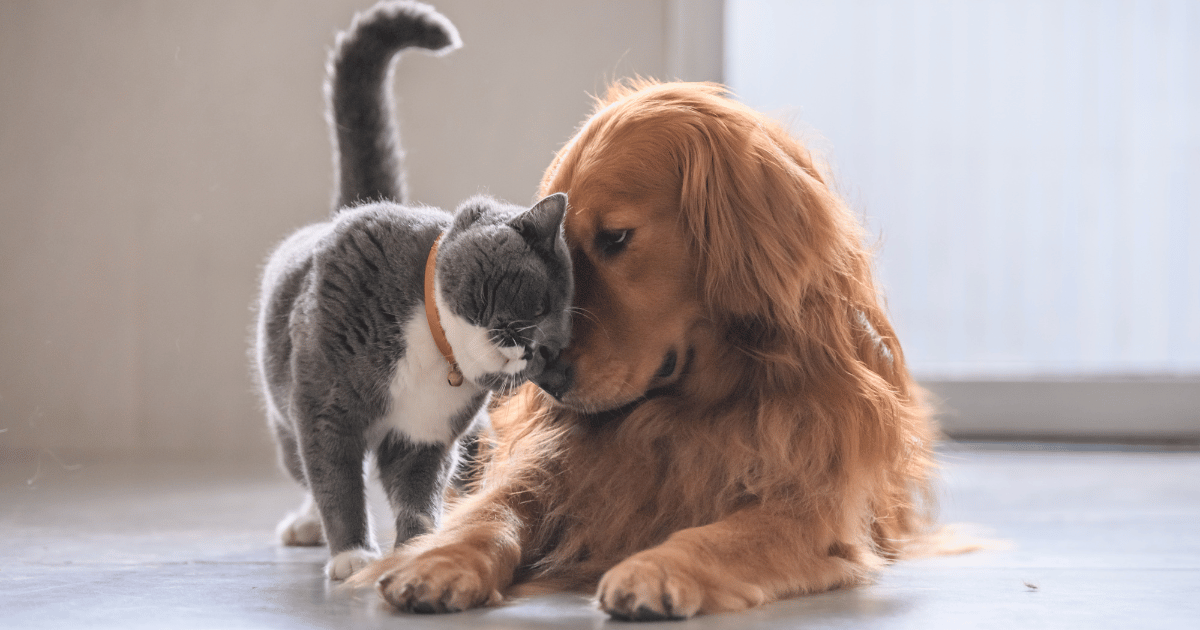
Coexisting with Pets and Protecting Wildlife in Australia
Domestic cats and dogs are beloved companions in many Australian households. However, their natural hunting instincts pose a significant threat to wildlife. With millions of pet cats and dogs and a substantial population of unowned animals in Australia, managing domestic pets responsibly is essential to minimise harm to vulnerable species. This page guides you on how to ensure the safety of your pets while protecting native wildlife.
Understanding the Issue:
According to the RSPCA, Australia boasts approximately 4.2 million pet dogs and 3.3 million pet cats, making them a common sight in households nationwide (1). Domestic animal attacks are a common reason for wildlife rescue, particularly with mammals. It’s difficult to estimate the impact on wildlife of cats kept as domestic pets however recent studies suggest that on average, each roaming pet cat in Australia kills 186 animals per year. This includes 110 native animals (40 reptiles, 38 birds and 32 mammals).
Impact of Domestic Pets:
While domestic cats and dogs may sometimes reduce damage from introduced pests like rats, their hunting can harm local wildlife populations. Studies suggest cats primarily prey on small mammals, birds, and human-derived foods. In some cases, domestic and stray cats have contributed to declines in suburban populations of native species like Eastern barred bandicoots and superb Lyrebirds (3).
Unowned Cats:
Unowned cats, including strays and ferals, also threaten wildlife. Recent research suggests their population may be lower than previously estimated, ranging from 1.4 million to 5.6 million, depending on factors such as prey availability and climate. Government programs are in place to address the issue of unowned cats (4).
Responsible Pet Ownership:
Every pet deserves a safe and loving home, whether a cat or a dog. Responsible pet ownership can help pets and wildlife coexist harmoniously. Here are some steps you can take:
1. Keep Your Pets Indoors at Night: Cats, particularly, should be kept indoors when native animals are most active. (Read the Cat Protection Society factsheet on how to make your pet a happy and healthy indoor cat)
2. Provide Adequate Food and Shelter: Ensure your pets have enough food, clean water, and suitable shelter to meet their needs.
3. Safe Outdoor Spaces: If you have a yard, consider creating separate areas for pets and wildlife, such as fully enclosed cat runs or enclosures. (Read the Cat Protection Society factsheet on cat enclosures)
4. Identification: Always identify your pets with collars, tags, and microchips. For cats, adding collar bells can help alert wildlife to their presence.
5. Spaying/Neutering: De-sex your pets to prevent unwanted litters and reduce the impact of unowned animals on wildlife.
6. Feeding Strays: Never feed a stray cat or dog unless you intend to adopt and care for it. Instead, report sightings to local authorities or animal welfare organizations.
Helping Injured Wildlife:
If you discover a sick, injured, or orphaned native animal on your property, keep pets and people away to reduce stress on the animal. Contact WIRES (1300 094 737) , for guidance and assistance. Native animals that have had contact with the saliva of cats and dogs should receive antibiotics, even if they appear unharmed.
In conclusion, responsible pet ownership and vigilance in protecting wildlife are essential for maintaining a healthy balance between our pets and the native species that share our environment. Following these guidelines can help create a safe and harmonious ecosystem for all.
Helpful contact numbers:
- Catnip Modular Cat Parks 1800 639 998
- Cats Inside Out Cat Enclosures 0408 060 164
- Cat Protection Society (02) 9519 7201
- RSPCA (02) 9770 7555
For more information, download our WIRES Living with Wildlife Factsheet here.
To access 24/7 rescue advice and assistance for sick, injured and orphaned native animals call 1300 094 737, or fill in the online rescue form.
Sign Up for Wildlife News
Stay in touch and get our regular rescue stories, WIRES updates and a free copy of our 15 Ways to Help Wildlife ebook
